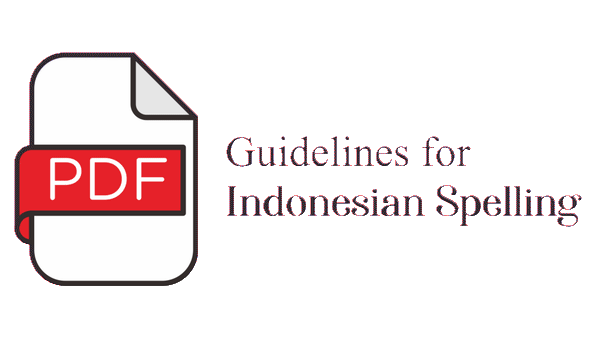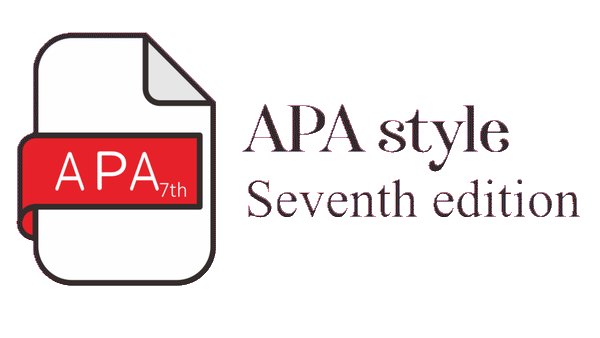FAKTOR PENENTU ADOPSI STANDAR ORGANIK DAN DAMPAKNYA TERHADAP KINERJA BUDIDAYA UDANG WINDU
Abstract
Standar keamanan pangan di Indonesia telah diusulkan untuk menghadapi tantangan pasar ikan global seperti peningkatan produksi budidaya dan perjanjian perdagangan bebas. Namun, manfaat sertifikasi keamanan pangan bagi pembudidaya ikan sering diperdebatkan. Dampaknya sangat kontekstual, yang sebenarnya sangat relevan dengan sektor perikanan skala kecil yang memiliki tingkat keragaman agro ekologi dan kondisi sosial ekonomi. Ini tidak selalu dipertimbangkan dalam penelitian sebelumnya. Oleh karena itu, kajian ini menganalisis dampak adopsi organic standard terhadap produktivitas petambak udang dengan mengambil studi kasus di Kabupaten Sidoarjo. Analisis yang digunakan untuk mengetahui faktor penentu adopsi menggunakan model probit; sedangkan untuk mengukur dampak terhadap outcome budidaya udang digunakan model endogenous switching regression. Hasil analisis probit menunjukkan bahwa standar organik tampaknya lebih banyak diterapkan pada pembudidaya yang memiliki pekerjaan di luar tambak udang dan lebih banyak memiliki pengalaman, tetapi kurang diadopsi oleh petani yang menyewa tambak, memiliki hubungan pasar dan hubungan kredit dengan pembeli mereka. Hasil analisis dampak menunjukkan bahwa rata-rata dari hasil budidaya udang tidak ditemukan perbedaan yang signifikan antara petambak yang mengadopsi standar dan yang tidak mengadopsi, sedangkan terdapat perbedaan signifikan dalam keuntungan bersih antara dua rezim. Namun, hasil analisis menunjukkan bahwa adopter memiliki hasil lebih besar pada produksi udang jika mereka tidak mengadopsi, begitu pula sebaliknya terhadap nonadopter menghasilkan produksi udang lebih kecil apabila mereka mengadopsi standard. Di sisi lain, adopter memiliki profit lebih kecil pada produksi udang jika mereka tidak mengadopsi, begitu pula sebaliknya terhadap non-adopter menghasilkan profit lebih kecil apabila mereka tidak mengadopsi standard.
Determinants for Adopting Organic Standard and Their Impact on Performance of Black Tiger Shrimp Farming
Food safety standard in Indonesia has been proposed to face global fish market challenges such as increasing aquaculture production and free trade agreements. Yet, the benefits of food safety certification for farmers has often been debated. It has context-specific impact and closely relevant to small farm sector with its large degree of agroecological and socio-economic heterogenity. This idea was not always get into consideration in previous researches. Therefore, this paper analyzes the impact of organic standard adoption on productivity of small-scale shrimp farming in Indonesia. The study used a probit model to determine the determinants of adoption, while endogenous switching regression model was used to measure the impact on the outcome of shrimp farming. Heterogeneity is accounted for an endogenous switching regression framework. The analytical result of probit showed that organic standard is more applied to farmers who have off-farm job and experiences, but is less adopted by farmers who rent ponds, have market and credit relationship with their buyers. The result of impact analysis showed that there were no significant differences on shrimp production between those adopted the standard and those who did not, the average yield of shrimp farming was not found to be a significant between farmers who adopted and those who did not adopt the standard, while there were significant differences on net profit between the two regimes. However, the analysis found that adopters had higher results on shrimp production if they do not adopt standard, and nonadopters had less shrimp production if they adopt the standard. On the other hand, adopters have smaller profit on shrimp production if they do not adopt the standard, and non-adopters made smaller profits if they do not adopt the standard.
Keywords
Full Text:
PDFReferences
Ababouch, L. (2006). Assuring fish safety and quality in international fish trade. Marine Pollution Bulletin, 53(10-12), 561-568.
Ababouch, L., Gandini, G., & Ryder, J. (2005). Causes of detentions and rejections in international fish trade: Food & Agriculture Org.
Aloui, O., & Kenny, L. (2005). The cost of compliance with SPS standards for Moroccan exports:
A case study. World Bank Agriculture and Rural Development Discussion Paper. World Bank, Washington DC.
Bayramoglu, Z., Gundogmus, E., & Tatlidil, F. F. (2010). The impact of EurepGAP requirements on farm income from greenhouse tomatoes in Turkey. African Journal of Agricultural Research, 5(5), 348-355.
Belton, B., Haque, M. M., & Little, D. C. (2011). Certifying catfish in Vietnam and Bangladesh: Who will make the grade and will it matter? Food Policy, 36(2), 289-299. Belton, B. D. N. (2010). The social relations of aquaculture development in South and Southeast Asia.
Bush, S. R., Belton, B., Hall, D., Vandergeest, P., Murray, F. J., Ponte, S., Hatanaka, M. (2013). Certify sustainable aquaculture? Science, 341(6150), 1067-1068.
Cabello, F. C. (2006). Heavy use of prophylactic antibiotics in aquaculture: a growing problem for human and animal health and for the environment. Environmental Microbiology, 8(7), 1137-1144. doi:10.1111/j.1462-2920.2006.01054.x
Chimatiro, S. K. (1998). Aquaculture production and potential for food safety hazards in sub-Saharan Africa: with special reference to Malwai*. International Journal of Food Science & Technology, 33(2), 169-176. doi:10.1046/j.13652621.1998.3320169.x
Cole, D. W., Cole, R., Gaydos, S. J., Gray, J., Hyland, G., Jacques, M. L., . Au, W. W. (2009). Aquaculture: Environmental, toxicological, and health issues. International journal of hygiene and environmental health, 212(4), 369-377.
Comtrade, (2016). UN Comtrade | International Trade Statistics Database. https://comtrade.un.org/.
Corsin, F., Funge-Smith, S., & Clausen, J. (2007). A qualitative assessment of standards and certification schemes applicable to aquaculture in the Asia-Pacific region. RAP Publication (FAO).
Di Falco, S., Veronesi, M., & Yesuf, M. (2011). Does adaptation to climate change provide food security? A micro-perspective from Ethiopia. American Journal of Agricultural Economics, 93(3), 829-846.
Dorr, A. C., & Grote, U. (2009). The role of certification in the Brazilian fruit sector. Revista de Economia Contemporânea, 13(3), 539-571.
FAO. (2018). The State of World Fisheries and Aquaculture - Meeting The Sustainable Development Goals. Rome.
FAO, & WHO. (2017). Trade and Food Standards. Joint FAO/WHO Publication. Retrieved from www.fao. org/publications/card/en/c/98a9f47b-c43f-49df92f4-3e25134a2e2c/.
FAO. (2003). FAO’s strategy for a food chain approach to food safety and quality: A framework document for the development of future strategic direction. Retrieved from http://www.fao.org/DOCREP/ MEETING/006/y8350e.
Fuglie, K. O., & Bosch, D. J. (1995). Economic and environmental implications of soil nitrogen testing: A switching-regression analysis. American Journal of Agricultural Economics, 77(4), 891-900.
Giovannucci, D., & Reardon, T. (2000). Understanding Grades and Standards: and how to apply them.
Hammoudi, A., Hoffmann, R., & Surry, Y. (2009). Food safety standards and agri-food supply chains: an introductory overview. European Review of Agricultural Economics, 36(4), 469-478. doi:10.1093/erae/jbp044.
Handschuch, C., Wollni, M., & Villalobos, P. (2013). Adoption of food safety and quality standards among Chilean raspberry producers – Do smallholders benefit? Food Policy, 40, 64-73. doi:http://dx.doi.org/10.1016/j. foodpol.2013.02.002.
Henson, S., Brouder, A.-M., & Mitullah, W. (2000). Food Safety Requirements and Food Exports from Developing Countries: The Case of Fish Exports from Kenya to the European Union. American Journal of Agricultural Economics, 82(5), 1159-1169. doi:10.2307/1244245.
Henson, S., Masakure, O., & Cranfield, J. (2011). Do Fresh Produce Exporters in Sub-Saharan Africa Benefit from GlobalGAP Certification? World Development, 39(3), 375-386. doi:http://dx.doi. org/10.1016/j.worlddev.2010.06.012.
Jacquet, J., & Pauly, D. (2008). Funding priorities: big barriers to small-scale fisheries. Conservation Biology, 22(4), 832-835.
Jena, P. R., Stellmacher, T., & Grote, U. (2012). The impact of coffee certification on small-scale producers’ livelihoods: evidence from Ethiopia. Retrieved from.
Jensen, H. H., Unnevehr, L. J., & Gomez, M. I. (1998). Costs of improving food safety in the meat sector. Journal of Agricultural and Applied Economics, 30(01), 83-94.
Kementrian Kelautan dan Perikanan. 2016. Kelautan dan Perikanan dalam Angka Tahun 2016. Pusat Data, Statistik dan Informasi. Kementrian Kelautan dan Perikanan.
Khonje, M., Manda, J., Alene, A. D., & Kassie, M. (2015). Analysis of adoption and impacts of improved maize varieties in eastern Zambia. World Development, 66, 695-706.
Kleemann, L., Abdulai, A., & Buss, M. (2014). Certification and Access to Export Markets: Adoption and Return on Investment of Organic-Certified Pineapple Farming in Ghana. World Development, 64, 79-92. doi:http://dx.doi. org/10.1016/j.worlddev.2014.05.005.
Lokshin, M., & Sajaia, Z. (2004). Maximum likelihood estimation of endogenous switching regression models. The Stata Journal, 4(3), 282-289.
Maddala, G. S. (1986). Limited-dependent and qualitative variables in econometrics: Cambridge university press.
Maddala, G. S., & Nelson, F. D. (1974). Maximum likelihood methods for models of markets in disequilibrium. Econometrica: Journal of the Econometric Society, 1013-1030.
Maldonado, E. S., Henson, S. J., Caswell, J. A., Leos, L. A., Martinez, P. A., Aranda, G., & Cadena,
J. A. (2005). Cost–benefit analysis of HACCP implementation in the Mexican meat industry. Food Control, 16(4), 375-381. doi:http://dx.doi. org/10.1016/j.foodcont.2004.03.017.
Marschke, M., & Wilkings, A. (2014). Is certification a viable option for small producer fish farmers in the global south? Insights from Vietnam. Marine Policy, 50, Part A, 197-206. doi:http://dx.doi. org/10.1016/j.marpol.2014.06.010.
Nhu, T. T., Schaubroeck, T., Henriksson, P. J., Bosma, R., Sorgeloos, P., & Dewulf, J. (2016). Environmental impact of non-certified versus certified (ASC) intensive Pangasius aquaculture in Vietnam, a comparison based on a statistically supported LCA. Environmental pollution, 219, 156-165.
Ollinger, M. (2008). The Cost of Food Safety Technologies in the Meat and Poultry Industries: Citeseer.
Pérez-Ramírez, M., Phillips, B., Lluch-Belda, D., & Lluch-Cota, S. (2012). Perspectives for implementing fisheries certification in developing countries. Marine Policy, 36(1), 297-302.
Pizer, S. D. (2016). Falsification testing of instrumental variables methods for comparative effectiveness research. Health services research, 51(2), 790-811.
Randell, A., & Whitehead, A. (1997). Codex Alimentarius: food quality and safety standards for international trade. Revue scientifique et technique-Office international des épizooties, 16, 313-318.
Rico, A., Satapornvanit, K., Haque, M. M., Min, J., Nguyen, P. T., Telfer, T. C., & van den Brink, P. J. (2012). Use of chemicals and biological products in Asian aquaculture and their potential environmental risks: a critical review. Reviews in Aquaculture, 4(2), 75-93. doi:10.1111/j.17535131.2012.01062.x.
Ryder, J., Iddya, K., & Ababouch, L. (2014). Assessment and management of seafood safety and quality: Current practices and emerging issues.
FAO fisheries and aquaculture technical paper(574), I. Sapkota, A., Sapkota, A. R., Kucharski, M., Burke, J., McKenzie, S., Walker, P., & Lawrence, R. (2008). Aquaculture practices and potential human
health risks: Current knowledge and future priorities. Environment International, 34(8), 1215-1226.doi:http://dx.doi.org/10.1016/j. envint.2008.04.009.
Shiferaw, B., Kassie, M., Jaleta, M., & Yirga, C. (2014). Adoption of improved wheat varieties and impacts on household food security in Ethiopia. Food Policy, 44, 272-284.
Subervie, J., & Vagneron, I. (2013). A Drop of Water in the Indian Ocean? The Impact of GlobalGap Certification on Lychee Farmers in Madagascar. World Development, 50, 57-73. doi:http://dx.doi. org/10.1016/j.worlddev.2013.05.002.
Tlusty, M. F. (2012). Environmental improvement of seafood through certification and ecolabelling: theory and analysis. Fish and Fisheries, 13(1), 1-13.
Traill, W. B., & Koenig, A. (2010). Economic assessment of food safety standards: Costs and benefits of alternative approaches. Food Control, 21(12), 1611-1619. doi:http://dx.doi.org/10.1016/j. foodcont.2009.06.018
Trienekens, J., & Zuurbier, P. (2008). Quality and safety standards in the food industry, developments and challenges. International Journal of Production Economics, 113(1), 107-122. doi:http://dx.doi. org/10.1016/j.ijpe.2007.02.050
Valdimarsson, G., Cormier, R., & Ababouch, L. (2004). Fish safety and quality from the perspective of globalization. Journal of Aquatic Food Product Technology, 13(3), 103-116.
Valkila, J. (2009). Fair Trade organic coffee production in Nicaragua — Sustainable development or a poverty trap? Ecological Economics, 68(12), 3018-3025. doi:http://dx.doi.org/10.1016/j. ecolecon.2009.07.002
Valkila, J., & Nygren, A. (2010). Impacts of Fair Trade Certification on Coffee Farmers, Cooperatives, and Laborers in Nicaragua. Agriculture and Human Values, 27(3), 321-333. doi:http://link. springer.com/journal/volumesAndIssues/10460
Vandergeest, P., & Unno, A. (2012). A new extraterritoriality? Aquaculture certification, sovereignty, and empire. Political Geography, 31(6), 358-367.
Wakamatsu, M., & Wakamatsu, H. (2017). The certification of small-scale fisheries. Marine Policy, 77, 97-103.
Ward, T., Phillips, B., & Porter, R. (2011). Let’s get certified; Exploring the certification of farmed seafood. World Aquaculture, 42(3), 31.
Washington, S., & Ababouch, L. (2011). Private standards and certification in fisheries and aquaculture: current practice and emerging issues. FAO fisheries and aquaculture technical paper(553),
I. Xie, B., Qin, J., Yang, H., Wang, X., Wang, Y.-H., & Li, T.-Y. (2013). Organic aquaculture in China: A review from a global perspective. Aquaculture, 414, 243-253.
Yapp, C., & Fairman, R. (2006). Factors affecting food safety compliance within small and medium-sized enterprises: implications for regulatory and enforcement strategies. Food Control, 17(1), 42-51. doi:http://dx.doi.org/10.1016/j. foodcont.2004.08.007
DOI: http://dx.doi.org/10.15578/jsekp.v14i1.7700
Indexed by:
-------------------------------------------------------------------------------------
Published by
Research Center for Marine and Fisheries Socio-Economic
in collaboration with
Indonesian Marine and Fisheries Socio-Economics Research Network

This work is licensed under a Creative Commons Attribution-NonCommercial-ShareAlike 4.0 International License.



















